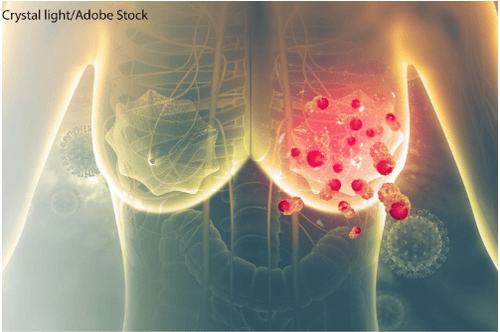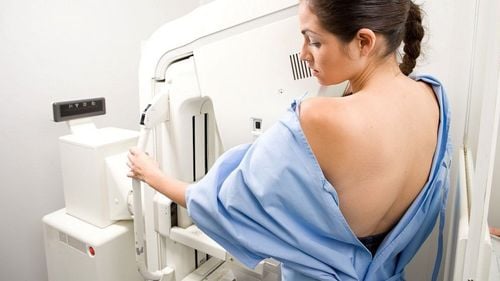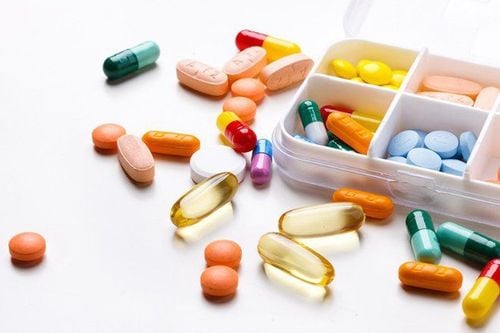This is an automatically translated article.
The article was written by Specialist Doctor I Nguyen Thi Mai - Radiologist, Department of Diagnostic Imaging - Vinmec Phu Quoc International General Hospital.Mammography is a technique that uses low-intensity X-rays to shine on the mammary gland tissue to capture images of the mammary gland. This method is used as a screening tool to detect early breast cancer in asymptomatic women. They can also be used to detect and diagnose breast disease in women who experience symptoms such as lumps, pain, skin indentations, or nipple discharge.
1. Who should have a mammogram?
Different medical professionals have different recommendations for mammography. The following screening guidelines are for early detection of cancer in asymptomatic women:
Women aged 40 to 44 years should have the option to begin annual breast cancer screening with mammography. Women aged 45 to 54 should have a mammogram every year. Women 55 and older should switch to mammograms every 2 years or possibly continue yearly screening. Screening should continue as long as a woman is in good health and is expected to live another 10 years or more. For women under the age of 40 but at high risk (carrying BRCA1, BRCA2 mutations, having a family history of breast cancer, obese women, diabetics, not having children, not breastfeeding): mammograms 5 years earlier than recommended.

2. Indications for mammography
Breast cancer screening, early detection of non-palpable clinical lesions. Cases of breast abnormalities (including both men and women). Follow-up scan of known breast lesions. Detection of recurrent breast lesions. Guidelines for biopsies.
3. How is mammography done?
3.1 How to prepare for a mammogram?
When to check : Best mammogram 1 to 2 weeks after your period starts. If you have breast implants, please inform your doctor or radiologist, as breast implant devices can also interfere with accurate mammogram readings. The announcement helps the technician know how to carefully compress the breast to improve vision without breaking the implant. Caution: If you are pregnant or think you may be pregnant, please check with your doctor before scheduling an exam. Other methods of breast examination will be discussed as an alternative to mammography. Breastfeeding: Please inform the technician if you are currently breastfeeding. Do not use any deodorant, powder, lotion, or perfume on the day of your mammogram.

3.2 Mammography procedure
You will need to take off your tops and bras. You will stand in front of an X-ray machine. Your breasts will be placed on the mammogram. A clear plastic disc presses down on your breast for a few seconds, which can be slightly uncomfortable but most people don't find it painful. The technician will take pictures of the breasts. These pictures are then sent to a radiologist to analyze them.
4. The benefits and drawbacks of mammography
4.1 Benefits
Mammography screening reduces the risk of dying from breast cancer . It is useful for detecting all types of breast cancer, including invasive and lobular cancers. Screening mammograms improves detection of small tumors. When small cancers are found, you have more treatment options. The use of mammography increases the detection of small abnormal growths confined to the milk ducts of the breast, known as ductal carcinoma in situ (DCIS). There is no more radiation in the patient's body after the x-ray examination. X-rays are generally free of side effects within the scope of mammography.

4.2. Limitations of mammography
While mammography is the best breast cancer screening tool available today, mammography does not detect all breast cancers. This is called a false negative result. On the other hand, when a mammogram looks abnormal and there is no cancer, this is called a false-positive result. Screening mammograms is often not sufficient to determine the existence of a benign or malignant disease with certainty. If abnormalities are present, your radiologist may recommend other imaging modalities. Increased breast density makes it difficult to see cancer on mammograms. At Vinmec International General Hospital, there is a Breast Cancer Screening Package, which helps customers screen and detect breast cancer early even when there are no symptoms. When registering for the Breast Cancer Screening Package, customers will receive:
Examination and consultation with an oncologist. Breast cancer screening by bilateral breast ultrasound and mammogram. Team of highly qualified and experienced doctors. Comprehensive professional cooperation with domestic and international hospitals: Singapore, Japan, USA, etc. Comprehensive treatment and care for patients, multi-specialty coordination towards individualizing each patient. Having a full range of specialized facilities to diagnose the disease and stage it before treatment: Endoscopy, CT scan, PET-CT scan, MRI, histopathological diagnosis, gene-cell testing, .. There are full range of mainstream cancer treatment methods: surgery, radiation therapy, chemotherapy, stem cell transplant...
If you notice any unusual health problems, you should visit and consult. with specialist doctors.
Please dial HOTLINE for more information or register for an appointment HERE. Download MyVinmec app to make appointments faster and to manage your bookings easily.














